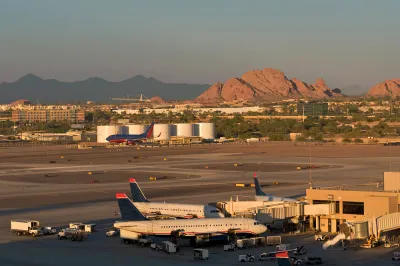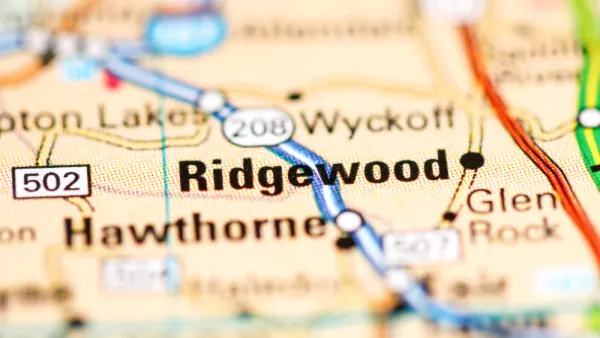With a growing population comes a need for more airport capacity, and Phoenix is no different. The challenge is finding the space to grow.

"The Phoenix City Council on Tuesday unanimously approved a 20-year blueprint for improvements to Sky Harbor International Airport, designed to make sure the airport can keep up with passenger and cargo demands that are expected to double by 2039," reports Melissa Yeager.
"The plan is a suggested road map for improvements, not a green light for any individual projects. It does not authorize funding. The city council will still have to approve each step of the plan, which is projected to cost $5.7 billion during the 20-year period," explains Yeager of the scope of the federal mandated plan.
Faced with the prospect of rapid growth in passenger and cargo volumes, the footprint of Sky Harbor runs into serious geographic limitations, like train tracks, roadways, and the Salt River. The airport owns significant parcels of land beyond the railroad tracks located to the north of the airport, so "one of the key parts of the 20-year plan is to 'trench' the railroad tracks — lower them below ground level — to create access to that land. The airport could then connect the land north of the tracks to its main campus by building taxiways over the tracks," according to Yeager.
FULL STORY: Sky Harbor Airport's $5.7 billion, 20-year plan: Double the capacity, add 'bus gates'

National Parks Layoffs Will Cause Communities to Lose Billions
Thousands of essential park workers were laid off this week, just before the busy spring break season.

Retro-silient?: America’s First “Eco-burb,” The Woodlands Turns 50
A master-planned community north of Houston offers lessons on green infrastructure and resilient design, but falls short of its founder’s lofty affordability and walkability goals.

Delivering for America Plan Will Downgrade Mail Service in at Least 49.5 Percent of Zip Codes
Republican and Democrat lawmakers criticize the plan for its disproportionate negative impact on rural communities.

Test News Post 1
This is a summary

Test News Headline 46
Test for the image on the front page.

Balancing Bombs and Butterflies: How the National Guard Protects a Rare Species
The National Guard at Fort Indiantown Gap uses GIS technology and land management strategies to balance military training with conservation efforts, ensuring the survival of the rare eastern regal fritillary butterfly.
Urban Design for Planners 1: Software Tools
This six-course series explores essential urban design concepts using open source software and equips planners with the tools they need to participate fully in the urban design process.
Planning for Universal Design
Learn the tools for implementing Universal Design in planning regulations.
EMC Planning Group, Inc.
Planetizen
Planetizen
Mpact (formerly Rail~Volution)
Great Falls Development Authority, Inc.
HUDs Office of Policy Development and Research
NYU Wagner Graduate School of Public Service




























